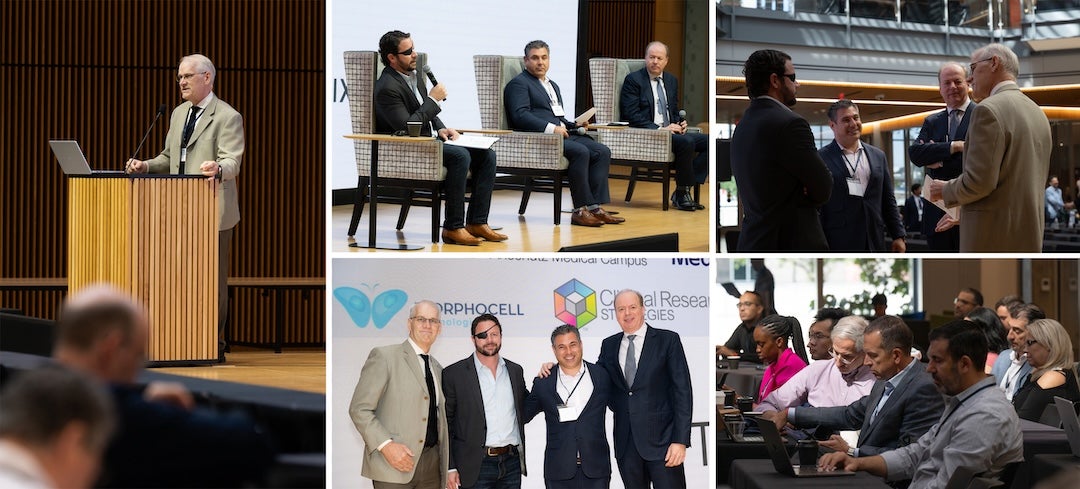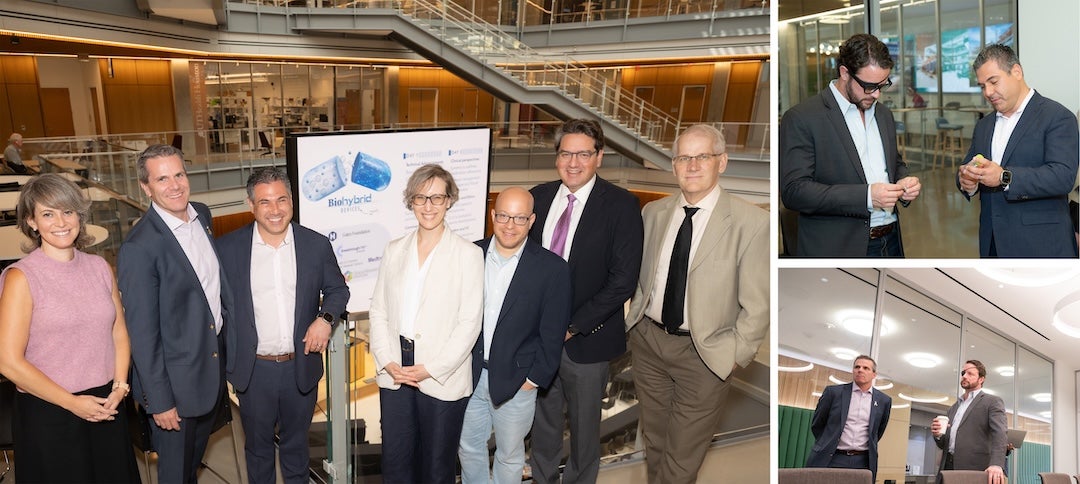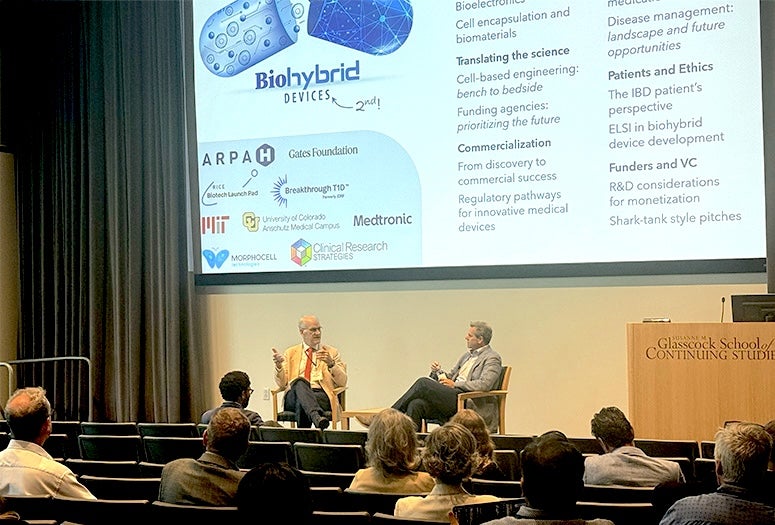Biohybrid devices, sometimes called “living pharmacies,” could transform medicine by enabling therapies produced and adjusted inside the body itself instead of drugs manufactured in centralized plants and delivered through conventional methods. To support research and translation in this area, Rice University hosted the second Advanced Research Projects Agency for Health (ARPA-H) Biohybrid Devices Summit Sept. 25-26 in Houston.
This year’s summit was held in part at Rice and at Helix Park in the Texas Medical Center (TMC) with support from the Rice Biotech Launch Pad ⎯ the university’s accelerator for advancing medical technologies into the clinic ⎯ and RBL LLC, a Rice-affiliated venture studio that builds biotech companies from university discoveries.
The meeting convened clinicians and researchers from Rice, institutions across the TMC and others from around the country along with leadership from the Cancer Prevention and Research Institute of Texas (CPRIT), representatives from the Gates Foundation, investors and commercialization leaders.

The two-day program opened on Rice’s campus with a keynote by John Rogers of Northwestern University and scientific sessions on encapsulated cell therapies, bioelectronics and biomaterials. Poster presentations and informal networking created opportunities for early career researchers to share their work and connect directly with funders and collaborators.
Omid Veiseh, a professor of bioengineering at Rice and faculty director of the Rice Biotech Launch Pad, detailed progress on immune-protective biomaterials and cell-based production of biologic drugs. His lab’s strategy — screening thousands of modified alginates, including in nonhuman primates, to tame the foreign-body response — supports the development of devices that can deliver potent biologics locally and for long durations.
“We are disrupting how the pharma industry is doing manufacturing and delivery,” said Veiseh, who is also a CPRIT Scholar. “Instead of tethering patients to hospital beds, IV bags and external monitors, we will use a minimally invasive procedure to implant a small device that continuously monitors disease and adjusts treatment in real time.”
The summit’s second day at Helix Park included sessions on clinical perspectives for medication adherence and disease management followed by discussions on commercialization strategies.
U.S. Rep. Dan Crenshaw (R-Atascocita) of Texas joined Veiseh and RBL LLC founder and CEO Paul Wotton for a Q&A on the policy and commercialization challenges of advancing biohybrid devices. Crenshaw underscored the urgency of speeding translation and securing U.S. leadership in the field. He called for more efficient federal review pathways and stressed the importance of investing in U.S.-based biomanufacturing to secure supply chains.

“We can’t afford timelines that stretch a decade or more if we want to stay ahead,” Crenshaw said. “We have to think about how to keep manufacturing here in the United States.”
Wotton, who leads RBL LLC’s effort to turn Rice-discovered technologies into companies, emphasized Houston’s position as an emerging biotech hub.
“This medical system here sees about 10 million patients every year,” Wotton said. “Most of the clinical trials in this country go through Houston one way or another, and yet we don’t have a biotechnology industry in this city compared to what we have in Cambridge or San Francisco. We have to change that.”
After the Q&A, Crenshaw was invited to view technology demonstrations. Veiseh presented HAMMR, or “hybrid advanced molecular manufacturing regulator,” an implantable device that continuously monitors tumors and delivers immunotherapy on demand. HAMMR is being developed as part of THOR, short for “targeted hybrid oncotherapeutic regulation,” a Rice-led program supported by up to $45 million in funding from ARPA-H. A first clinical trial in ovarian cancer is slated to begin in 2026.
The summit followed a series of ARPA-H program reviews held earlier in the week, including updates on THOR as well as ROGUE, or “Rx on-site generation using electronics,” which is funded by up to $34.9 million and led by Carnegie Mellon University with Rice’s Biotech Launch Pad steering commercialization. The project is developing a durable, implantable device for obesity and Type 2 diabetes.

Paul Sheehan, the ARPA-H program manager who organized the summit, said the intent was to bring together all the players needed to advance novel devices from the prototype stage to clinical reality.
“The purpose is to move technologies into commercialization as quickly as possible, so they can benefit patients,” Sheehan said. “There are simply questions you ask in academia and questions you ask in the commercial space. What many universities ⎯ and Rice in particular ⎯ have done well is ask how do we get these technologies out into the world?”
Dedicated to closing the gap between discovery and translation, the Biohybrid Devices Summit underscored Rice’s growing role at the forefront of medical innovation and Houston’s momentum as a national hub for the future of biotechnology.
- Access associated media files:
-
https://rice.box.com/s/g5416xwdz2ejat39mntped9l7pq32kum
(Photos by Jeff Fitlow/Rice University)

